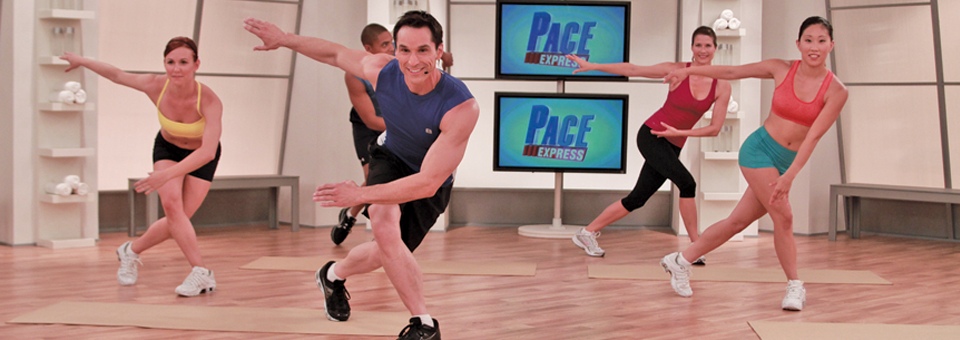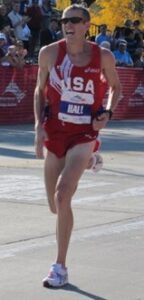For 10 years, long-distance runner Ryan Hall held the U.S. record in the half marathon.
He was the first person to break the one-hour barrier in that race. And his time in the Boston Marathon remains the fastest for any American athlete.
Ryan trained hard.
And he trained often.
Until he was forced to retire at the age of 33 because his strength was sapped and his fatigue extreme.
By the end of his career, the 5’10” former Olympian weighed a paltry 127 pounds.
He admits his grinding workouts left him “weak and underdeveloped.”
Today, he’s gained almost 40 pounds of pure muscle — and says he couldn’t be happier.
His new workout routine includes intense drills with short rest periods between sets. More on that in a moment…
Most of the running world was shocked when Hall retired at such an early age. But I wasn’t at all surprised when I heard.
You see, along with being an anti-aging doctor, I’m a certified personal trainer. I spent years working with athletes. And I saw what long-distance running and endurance training did to their bodies.
This type of cardio exercise causes your muscles to simply waste away.
“Cardio” is short for cardiovascular endurance training.
It’s the idea that you have to raise your heart rate for a long duration. It’s when you spend 45 minutes on a treadmill, run for miles a day, or take an hour-long aerobics class.
This kind of exercise is just not natural. Our ancestors didn’t go jogging. They had short bursts of action, followed by longer periods of rest. And it’s how they stayed strong and healthy with powerful muscles.
Unlike the stressed-out, weak muscles of long-distance runners like Ryan Hall.
Endurance exercise quickly
burns through carbs and fat. This forces your body to break down muscle to help meet energy needs.It also uses your smaller, more oxygen-efficient muscle fibers and ignores your larger, more powerful muscle fibers that actually trigger muscle-building.
One study showed that the muscles of marathon runners actually shrink.
When the muscle biopsies of marathon runners were analyzed, researchers found their muscle fiber size had decreased and atrophied.1
The way to build strong muscles that keep you healthy is to shorten the duration of your exertion but increase the challenge. That’s the philosophy behind my PACE principle.
PACE stands for Progressively Accelerating Cardiopulmonary Exertion, and the concept is pretty simple: short, progressively accelerated bursts of intense exercise followed by rest.
And the research proves it works…
One study followed women over the age of 80. Three times a week they did short but intense exercise routines similar to PACE. After just 36 sessions they increased their lower-body muscle mass by 26% and their leg muscle power by 31%.2
There are a lot of ways to do PACE, but for building strength, your best bet is to do resistance training exercises. But you don’t need to use weights or join a gym. Your body is the only equipment you need.
I’m talking about calisthenics, which use the resistance of your own body weight to make you stronger (they’ll help you burn extra fat, too). And you’ll see and feel results almost immediately.
In one study, 21 frail, elderly subjects took part in resistance training. After just 11 weeks, their muscle fiber increased by up to 60%.3
But another study really made me sit up and take notice…
In this study, researchers took muscle samples from both young and older adults. The seniors were 59% weaker at the start of the study than the young people. The older group did resistance calisthenics three times a week.
After six weeks, the older group improved their muscle strength by about 50%. But there was an even more remarkable side effect. Their muscle tissue was rejuvenated. In fact, most of the genes that express aging were reversed back to younger levels!4
Grow Your Muscles While Reversing Aging
I’ve helped hundreds of people increase muscle mass with my PACE principle.
To get the biggest impact in the shortest amount of time, I recommend starting with one of the largest muscles in your body. Those are the quadriceps on the front of your thighs.
NOTE: Anyone can do PACE. You don’t have to be in great shape to start. That’s the beauty of this program.
All you need to remember is that no matter where you start, you just need to keep increasing the challenge. And to rest and recover fully between each period of exertion.
Here’s one of my favorite quad-builders:
Jump Squats
- Start with your body crouched, feet together, arms extended down, head straight and level.
- From this position, straighten your legs and jump upward as high as you can into the air.
- Once you have landed, quickly return to your original starting position, taking care not to lose your balance throughout the exercise.
- Repeat.
It will take you a few sessions to build up your stamina. Start slowly. If you’re a beginner or have trouble with your knees, you can take out the jump and just push yourself up on your toes.
Take plenty of time to build up your strength, endurance and balance gradually. Rest and recover between sets. At first, you’ll have to take longer breaks, but they’ll get shorter as you rebuild your natural strength.
To Your Good Health,
Al Sears, MD, CNS
- Trappe S, et al. “Single muscle fiber adaptations with marathon training.” J Appl Physiol. 101:721-727, 2006.
- Raue U, et al. “Improvements in whole muscle and myocellular function are limited with high-intensity resistance training in octogenarian women.” J Appl Physiol. 2009;106(5):1611-7.
- LaStayo P, et al. “The positive effects of negative work: increased muscle strength and decreased fall risk in a frail elderly population.” J Gerontol A Biol Sci Med Sci. 2003; 58(5):M419-424.
- Melov S, et al. “Resistance exercise reverses aging in human skeletal muscle.” PLoS ONE. 2007; 2:e465.



